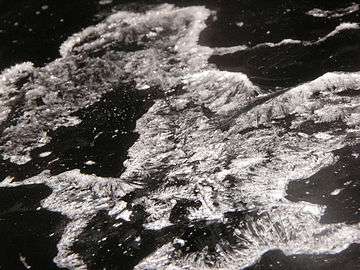K-hole

"K-hole" is a slang term for the subjective state of dissociation from the body commonly experienced after sufficiently high doses of the dissociative anesthetic ketamine. This state may mimic the experiences such as catatonic schizophrenia,[1] out-of-body experiences (OBEs) or near-death experiences (NDEs),[2] and is often accompanied by feelings of extreme derealization, depersonalization and disorientation, as well as temporary memory loss and vivid hallucinations.[3]
Description
The experience of the K-hole is, like many psychedelic experiences, highly subjective, and ketamine's effects may vary greatly between individuals. Often set and setting, the use of other drugs (prescribed or otherwise), as well as the user's physiology, psychology, personality and brain chemistry are among many defining factors which may affect an individual's personal experience of the K-hole, as well as other altered states of consciousness in general.
Impressions of the K-hole often include profound distortions in or complete loss of bodily awareness, sensations of floating or falling, euphoria, and total loss of time perception. Users may experience worlds or dimensions that are indescribable, all the while being completely unaware of or having lost their individual identities or their sense of an extant and external world.[4]
Subjective effects
Ketamine and its subjective effects were related by Timothy Leary to the eighth and final circuit of his eight-circuit model of consciousness, along with DMT and high doses of LSD.
In music
NOFX released a song about a K-hole in 1997 on their So Long and Thanks for All the Shoes album ("Kids of the K-Hole"). The electronic group The Chemical Brothers has a song entitled "Lost in the K-Hole" from their 1997 album Dig Your Own Hole. The other electronic group, Organ Donors, has a song entitled "Ket is for Horses" which featured a voice over addressing the effects of the drug Ketamine, including the K-Hole.
See also
Footnotes
- ↑ A James Giannini (1997). Drugs of Abuse (Second ed.). Los Angeles: Practice Management Information Corp. p. 126. ISBN 1-57066-053-0.
- ↑ Drugs; Mood, Memory and Mayhem, D Corrigan, The Drug Treatment Centre Board Evening Seminar Series. 2 November 2004 (page 6)
- ↑ Woodard, D., "The Ketamine Necromance", in Apocalypse Culture II, ed. Parfrey, A. (Los Angeles: Feral House, 2000), pp. 288-295.
- ↑ Ketamine, Pai & Heining, Contin Educ Anaesth Crit Care Pain (2007) 7 (2): 59-63.
References
- Curran, HV; Monaghan, L (May 2001). "In and out of the K-hole: A comparison of the acute and residual effects of ketamine in frequent and infrequent ketamine users". Addiction. 96 (5): 749–60. doi:10.1080/09652140020039116. PMID 11331033.